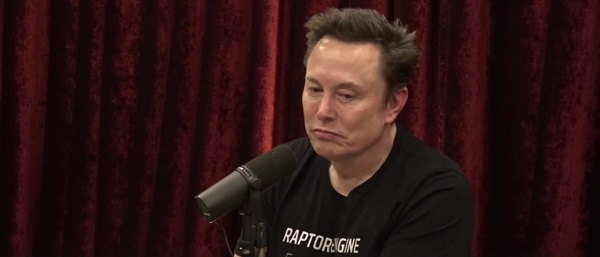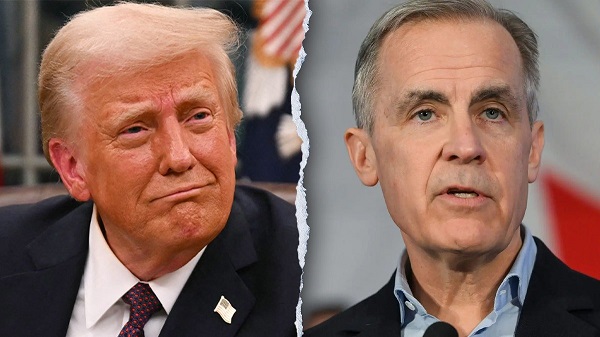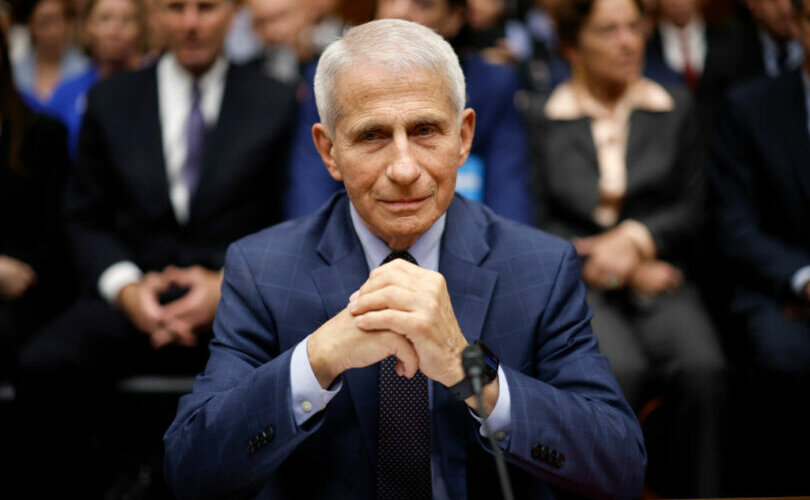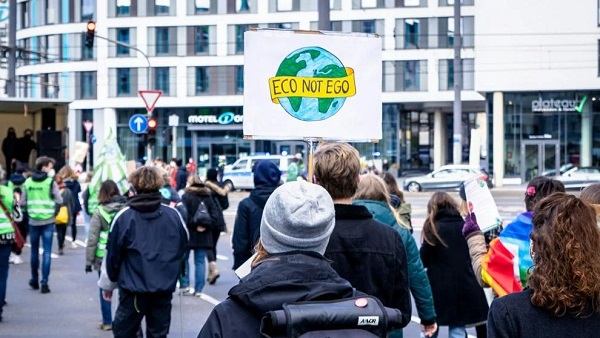International
Europe Can’t Survive Without America
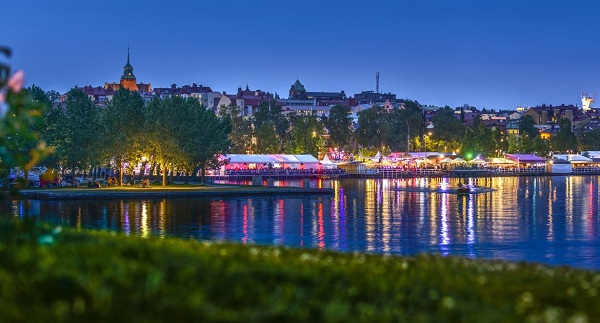
 Sven R Larson
Sven R Larson
But it is not America’s job to save the old continent
The most beautiful place in the world is located smack dab in the heart of northern Europe. It is a small town called Östersund. It stretches along the eastern shore of Storsjön, the “Great Lake”.
Across the strait from Östersund is the island of Frösön. From the farmlands in its center, you can see 30 churches, dense forests, crop fields, and on the far side of the Great Lake a horizon filled with snow-clad mountains. There is a church there, on the Frösön, where the world’s happiest marriages begin: when the bride walks out from the church, she is so overwhelmed by the gorgeous view that she forever loses her ability to speak.
My Swedish hometown is not the only place where Europe brims with beauty. From endless oceanic views in Ireland’s Galway to the meandering riverside cityscape in Budapest; from the midnight sun in Nordkap to the seductive darkness of Palermo; cities that let you marinate in living history, like Munich, Stockholm, Vienna, Rome, and Edinburgh.
Europe has it all. And yet, that continent is slowly, sadly, but inevitably sinking. It is a terrible conclusion to reach, but I see no other path forward for them.
Thanks for reading Larson’s Political Economy!
Subscribe for free to receive new posts and support my work.
There are a multitude of reasons for this; the destruction of such a solid piece of civilization does not come easy. Which, in all honesty, is a tribute to the solidity of the Western project in itself: it takes decades of political and economic mismanagement to bring a continet of 500 million people from the top of world prosperity into the murky quagmire of industrial poverty.
However, that is precisely what the Europeans are now doing. Their decline only seems to be reinforced by every new measure to prevent it.
From an American viewpoint, the increasingly depressing state of Europe has not yet risen to the peak of the news cycle. Perhaps it never will, but the transformation of Europe from the world’s most advanced economy (alongside America) to an economy-class Latin America will have major economic, geo-strategic, and cultural consequences.
Before I dissect those consequences, let me point to the main character traits of Europe’s self-inflicted demise.
Lack of Leadership
If there is one thing Europe does not have, it is visionary political leadership. Not that our own crop of political heralds in Washington are much to brag about, but the new Trump administration actually does have an idea of how to make America better. By his fast-paced, confident leadership, Trump is now challenging the Democrats to step up to the plate; with a little bit of luck, we will go into the coming elections choosing between candidates running on different versions of “America’s best days are ahead of us”.
None of that exists in Europe. To the extent their leaders formulate ideas for the future, it is all about how government can spend more money, regulate more of the private sector, and dole out grants to NGOs to run the internet era of a billboard campaign themed around some empty political slogan. This is endemic in the EU, and it has tangible consequences: just last year the Europeans realized that America was running away with the path to artificial intelligence, while Europe has not yet even built its own Silicon Valley for old-school computer technology.
The realization among Europe’s political leadership that they are losing the AI race led the EU to issue a report suggesting more regulations on private-sector AI development and more government spending to investigate the potentials of the AI revolution.
Such is the European response to every issue, including the so-called green transition. When Americans elected a new president to end the mad dash into EV transporation—and instead let the free market be the arbiter on how we propel ourselves around town—the EU and national government leaders in Europe waged a virtual economic war on fossil fuels, without being even close to replacing it with “renewables”.
The German energy debacle went so far that major German manufacturers accelerated their foreign direct investments in other countries. This is one reason why there will be a lot more auto industry jobs here in America in the coming years. While European political leaders get fixated on some outlandish economic fantasy, America gets down to business, goes to work, and moves forward.
In addition to the fantasy that the green transition should be shoved down people’s throats by government, Europe’s political leaders have surpassed the Biden administration many times over when it comes to immigration—legal and illegal. Instead of asking pragmatic questions about the balance between a mostly uneducated labor supply and Europe’s perennially high unemployment rates, the elected officials and their unelected bureaucrats in Brussels, Paris, Berlin, and other EU capitals forge ahead like drunken cows. They have deliberately unhinged themselves from reality; it is only in a fantasy world free of opposing arguments that you can flood the streets of your cities with endless waves of immigrants, without causing major social, economic, and public safety problems.
A War on Democracy
Again, America is not immune to this kind of make-believe leadership, but unlike America, Europe has no voice of opposition. Where the Tea Party turned MAGA movement showed how true democracy works, forging a nationwide organic alliance of voters, Europe has invented institutions, conventions, policies, and a political culture of efficiently suppressing opposition.
There is no First Amendment in Europe, which politicians in both the EU and national governments have taken advantage of. In what can only be described as a war on the core of democracy, the European political elite is fighting an increasingly aggressive battle against dissenting voices. National governments are formed not to further the will of the people, but to quell the voice of dissent.
Coalitions of resentment against the people have appointed prime ministers in Sweden, Finland, Austria, France. A coalition of resentment is trying to form a functioning government in Germany. Where hatred of a common adversary is the only common denominator, there can be no room for visions. All political eyes remain in the rearview mirror, anxiously trying to keep the distance from the last election results.
People are blinded by a common hatred they cannot see the future.
From the viewpoint of policy, the only thing that these coalitions of resentment can produce is a regurgitation of the past. This explains why there is no debate in Europe over the “green transition” and why there is only token talk about immigration. Prevailing paradigms, which caused people to vote for alternative parties, reign unchallenged.
As do their consequences. In other words, the more Europe’s anti-democratic leaders double down on policies that thwart free speech, choke their economy, and fragment cohesive societies, the more they will distance themselves and their continent from the future.
A Stupid Economy
Europeans pay far more in taxes than we Americans do. Income taxes often start at 30-40 percent—for the lowest incomes—and there are value-added taxes, VATs, on everything they buy. Excise taxes, “green taxes”, fees and administrative charges run amok.
At the same time, they don’t get much more than we do. If anything, they get less of most of things. In health care (which I hope to have time to write more about in closer detail), Europe’s foremost contribution is the waiting list. You have the right to health care, but that does not mean you can get it.
The same is true for the countries in Europe that have elaborate systems of child care: you have the right to it, but that does in no way mean it can find a spot for your kid when the time comes.
Europeans brag about their paid-leave programs. It is true that, e.g., parents can take a lot of time off from work to be with their kids. They also have long vacations. However, since these benefits are mandated by law, they are in no way reflective of what businesses can afford in terms of an absent workforce. Yes, it is nice to be able to be at home with your baby for the first year or 18 months of its life, but during that time your employer needs to hire a replacement.
When I talk to Europeans about their paid-leave system, they often suggest that we Americans have no paid leave at all. I point out that just because government does not provide it, does not mean it does not exist. We prefer to let employers and employees handle the paid-leave issue as part of a workforce benefits package.
Fixated on letting government take care of as much as possible of their lives, Europeans have created a welfare state that demands taxes close to—and sometimes higher than—50 percent of GDP. This is well above the 40-percent line where GDP growth permanently slows down; once the tax burden crosses that mark and no one cares, the country inevitably sinks into economic stagnation.
There is no advancement in the standard of living. Private purchasing power is no longer adequate to keep businesses going. Capital formation stagnates and eventually moves abroad. The tax base is eroded; a consequence-impaired governing coalition of resentment responds with even higher taxes.
All in all, Europe has ended up in a vicious downward economic spiral. Her leaders are unable to understand the problem, let alone offer a solution. Among the many repercussions of this is the slow decline in standard of living that is already passed on from parents to their children: each new generation of Europeans will find life to be a little less prosperous than their parents did.
The Role of America
For all these reasons—lack of leadership, a dwindling democracy, and a stagnant economy—the European continent is unable to break out of its self-inflicted societal stranglehold. But what made it drift into this fog of endless political self-harm?
In one word: America provided the Europeans with a shield of security during the Cold War. Germans, Brits, French, Dutch, Spanyards, and others got so used to living under the protective shield of American military might that they believed they no longer had to think about existential issues. Instead, they could spend their time inventing new entitlements for their welfare states.
Again: make-believe politics. They never thought that their growing welfare states would sink their economies; in fact, economists never thought that this would happen either. I was the first one to point out this relationship, and I did it only a decade ago.
Likewise, Europe’s make-believe politicians thought that they could enjoy free-of-charge American military protection forever. The end of the Cold War did not exactly change their minds: suddenly, they thought they had somehow “won” that war, and that they as the victors could dictate the terms of their own existence—without having to work for it.
When America gradually began orienting itself away from Europe, there was at first massive denial across the old world. Due in no small part to foolish rhetoric from our neocons (both Presidents Bush, Vice President Cheney and his daughter Liz, John Podhoretz, Senator Graham of South Carolina, Irving and Bill Kristol…), the Europeans were led to believe that America would still provide that shield of safety no matter how many other parts of the world we were engaged in.
But not even neocons last forever. Reality began poking through the European bubble of political fantasies during Trump’s first term; after a “breather” during the Biden administration we are now back to the harsh reality where America is asking the Europeans to do what every other nation, or union of nations, is doing: grow up and take responsibility for their own sovereignty.
In other words, America can save Europe, but it is not America’s business to do so.
The rational reaction to this from the Europeans would have been to open a vigorous, public debate over what priorities their countries should make: the welfare state or national defense? But instead of doing just that, they have gone into an Alice in Wonderland-style mental lockdown where politicians in every cardinal direction dispense edicts about throwing Gargantuan amounts of money into military expansion projects that they have no funds for, and no industrial capacity to deliver.
At best, Europe will fragment into regional coalitions of countries, where some will make a future for themselves and others will continue to sink. The four Visegrad states, Poland, Hungary, Czechia and Slovakia, are relatively strong economically. So are the Baltic states.
The Nordic countries could form a strong regional economy, but with Sweden suffering from political deadlocks, high crime, a corrupt government, and a perennially stagnant economy, that outlook is no longer possible.
Germany is an enigmatic entity in this context. If they cannot change their own energy policy, they are going to de-industrialize at a rapid rate. That, in turn, will likely lead to growing political tensions; is therean independent, non-communist East Germany in the cards?
Southern Europe is ironically the most resilient part of that continent. Greece, Italy, Spain, and Portugal have survived centuries of prosperity, poverty, war, and peace. They will find a way to muddle through a glacial but politically and economically visible European implosion.
The comparison to Latin America is more accurate than it might seem. Before World War II, Argentina, Uruguay, and Brazil were among the best, most thriving economies in the world. Then the welfare state happened…
Thanks for reading Larson’s Political Economy!
Subscribe for free to receive new posts and support my work.
Larson’s Political Economy is free today.
But if you enjoyed this post, you can tell Larson’s Political Economy that their writing is valuable by pledging a future subscription.
You won’t be charged unless they enable payments.
illegal immigration
Despite court rulings, the Trump Administration shows no interest in helping Abrego Garcia return to the U.S.


 By Greg Collard
By Greg Collard
With research assistance from James Rushmore
Timeline: The Case of Kilmar Armando Abrego Garcia
With President Trump sitting next to him, El Salvador President Nayib Bukele told reporters in the Oval Office on Monday that no, he is not going to release Kilmar Armando Abrego Garcia from his country’s Terrorism Confinement Center (CECOT), despite a Justice Department lawyer admitting in a court filing that Abrego Garcia’s deportation last month was an “administrative error.”
No matter, Bukele said when asked if would return him to the U.S.:
Bukele: Of course I’m not going to do it. The question is preposterous. How can I smuggle a terrorist into the United States. I don’t have the power to return him to the United States.
Reporter: But you could release him inside El Salvador.
Bukele: Yeah, but I’m not releasing, I mean I’m not very fond of releasing terrorists into our country. We just turned the murder capital of the world into the safest country in the Western hemisphere, and you want us to go back into releasing criminals so we can go back to being the murder capital of the world? That’s not going to happen.
Not that there was any doubt what Bukele would say. Attorney General Pam Bondi set the tone early on in the meeting. She explained what the Supreme Court meant last week when it said a lower court ruling “properly requires the government to ‘facilitate’ Abrego Garcia’s release from custody in El Salvador.”
The Supreme Court ruled, president, that if El Salvador wants to return him … we would facilitate it, meaning provide a plane.
It brings to mind President Clinton’s infamous grand jury testimony when he said: “It depends upon what the meaning of the word ‘is’ is.”
Abrego-Garcia left El Salvador and illegally entered the U.S. in 2011. His status as an illegal immigrant changed after he was arrested in 2019 and the Department of Homeland Security accused him of being a member of the MS-13 gang. Abrego Garcia fought the accusation and applied for asylum. Instead, an immigration judge granted him “withholding of removal” status.
A federal judge wrote in an April 6 opinion that in El Salvador “the Barrio 18 gang had been targeting him and threatening him with death because of his family’s pupusa business.”
The Justice Department argues its hands are tied. It doesn’t matter that the U.S. is paying El Salvador $6 million a year to house U.S. deportees at CECOT.
“The United States does not have control over Abrego Garcia. Or the sovereign nation of El Salvador,” says one court filing.
Below is a timeline of the case since Abrego Garcia was arrested last month, leading up to Monday’s Oval Office meeting with Bukele.
March 12-15, 2025
ICE agents stop Abrego Garcia and tell him that he is no longer under “withholding of removal” status. The Trump administration says he is a member of the MS-13 gang, which the president has designated a foreign terrorist organization.
Abrego Garcia, who denies he is part of MS-13, is sent to an ICE detention facility in La Villa, Texas, and from there he is deported to El Salvador on March 15 along with 260 others, primarily Venezuelan nationals. He is being held in CECOT, a prison that has a capacity of 40,000 inmates.
March 24, 2025
Abrego Garcia and his wife, Jennifer Vasquez Sura, file a lawsuit that notes Abrego Garcia has been in the U.S. legally since 2019 under withholding of removal status, and that the designation was never lifted.
They also accuse the government of sending Abrego Garcia to El Salvador despite “knowing that he would be immediately incarcerated and tortured in that country’s most notorious prison; indeed, Defendants have paid the government of El Salvador millions of dollars to do exactly that. Such conduct shocks the conscience and cries out for immediate judicial relief.”
The lawsuit requests the court order the U.S. government to tell the government of El Salvador to release and deliver Abrego Garcia to the U.S. Embassy in San Salvador.
March 31, 2025
The Justice Department acknowledges in a court filing that “although ICE was aware of his protection from removal to El Salvador, Abrego Garcia was removed to El Salvador because of an administrative error.”
Still, the Justice Department argues the motion should be denied because the court “has no power” over El Salvador. Justice Department attorneys argue:
Under their (plaintiffs) logic, this Court may assume jurisdiction to decide whether the order is legal, but if the order were determined legal, then jurisdiction would disappear again.
The government also says there’s no proof that Abrego Garcia will be tortured or killed in CECOT:
Plaintiffs point to little evidence about conditions in CECOT itself (focusing primarily on its capacity for detainees), instead extrapolating from allegations about conditions in different Salvadoran prisons. While there may be allegations of abuses in other Salvadoran prisons—very few in relation to the large number of detainees—there is no clear showing that Abrego Garcia himself is likely to be tortured or killed in CECOT. More fundamentally, this Court should defer to the government’s determination that Abrego Garcia will not likely be tortured or killed in El Salvador.
April 4, 2025
U.S. District Court Judge Paula Xinis orders the Trump Administration to return Abrego Garcia to the U.S. by 11:59 p.m., April 7. She writes:
Plaintiffs are likely to succeed on the merits because Abrego Garcia was removed to El Salvador In violation of the Immigration and Nationality Act…and without any legal process; his continued presence in El Salvador, for obvious reasons, constitutes irreparable harm; the balance of equities and the public interest weigh in favor of returning him to the United States; and issuance of a preliminary injunction without further delay is necessary to restore him to the status quo and to avoid ongoing irreparable harm resulting from Abrego Garcia’s unlawful removal.
April 5, 2025
The Justice Department appeals the order, calling it “indefensible” that “a federal district judge ordered the United States to force El Salvador to send one of its citizens—a member of MS-13, no less—back to the United States by midnight on Monday. If there was ever a case for an emergency stay pending appeal, this would be it.”
More from the appellate motion:
Foremost, [the order] commands Defendants to do something they have no independent authority to do: Make El Salvador release Abrego Garcia, and send him to America. That is why Plaintiffs did not even ask the district court for an order directing Abrego Garcia’s return. As Plaintiffs themselves acknowledged, a federal court “has no jurisdiction over the Government of El Salvador and cannot force that sovereign nation to release Plaintiff Abrego Garcia from its prison.” That concession is all that is needed to order a stay here. No federal court has the power to command the Executive to engage in a certain act of foreign relations; that is the exclusive prerogative of Article II, immune from superintendence by Article III.
April 6, 2025
Judge Xinis issues a follow-up memorandum opinion to her April 4 order:
Although the legal basis for the mass removal of hundreds of individuals to El Salvador remains disturbingly unclear, Abrego Garcia’s case is categorically different—there were no legal grounds whatsoever for his arrest, detention, or removal. Nor does any evidence suggest that Abrego Garcia is being held in CECOT at the behest of Salvadoran authorities to answer for crimes in that country. Rather, his detention appears wholly lawless.
The judge also writes that in 2019, Homeland Security “relied principally on a singular unsubstantiated allegation that Abrego Garcia was a member of MS-13.”
April 7, 2025
A three-judge panel of Fourth U.S. Circuit Court of Appeals unanimously denies the government’s motion for a stay of Xinis’ order that say Abrego Garcia must be returned to the U.S. by 11:59 p.m. Judge Stephanie Thacker writes:
The United States Government has no legal authority to snatch a person who is lawfully present in the United States off the street and remove him from the country without due process. The Government’s contention otherwise, and its argument that the federal courts are powerless to intervene, are unconscionable.
The Trump Administration appeals to the U.S. Supreme Court, and Chief Justice John Roberts grants an administrative stay to give justices time to consider the case.
Following the stay, Bondi accuses Abrego Garcia of being a “violent gang member”:
We will continue to fight for the safety of Americans and get these people out of our country to make America safe.
April 10, 2025
The Supreme Court rules against the Trump administration but directs Judge Xinis to “clarify” a portion of her ruling. From the Supreme Court’s decision:
The order properly requires the Government to “facilitate” Abrego Garcia’s release from custody in El Salvador and to ensure that his case is handled as it would have been had he not been improperly sent to El Salvador. The intended scope of the term “effectuate” in the District Court’s order is, however, unclear, and may exceed the District Court’s authority. The District Court should clarify its directive, with due regard for the deference owed to the Executive Branch in the conduct of foreign affairs. For its part, the Government should be prepared to share what it can concerning the steps it has taken and the prospect of further steps.
April 11, 2025
If the Supreme Court said, ‘Bring somebody back,’ I would do that. I respect the Supreme Court.
President Trump says that aboard Air Force One a day after the Supreme Court upholds a lower court ruling and says the government should “facilitate” Abrego Garcia’s return to the U.S.
Meanwhile, Judge Xinis issues a new order that directs the government to “take all available steps to facilitate the return” of Abrego Garcia. In a hearing, she also makes clear her frustration with the Justice Department.
“The record, as it stands, is, despite this court’s clear directive, your clients have done nothing to facilitate the return of Mr. Abrego Garcia,” she says.
Xinis also orders the administration to provide daily updates on the status of Abrego Garcia’s return. She also criticizes Justice Department attorneys in her order:
During the hearing, the Court posed straightforward questions, including: Where is Abrego Garcia right now? What steps had Defendants taken to facilitate his return while the Court’s initial order on injunctive relief was in effect…? Defendants’ counsel responded that he could not answer these questions, and at times suggested that Defendants had withheld such information from him. As a result, counsel could not confirm, and thus did not advance any evidence, that Defendants had done anything to facilitate Abrego Garcia’s return. This remained Defendants’ position even after this Court reminded them that the Supreme Court of the United States expressly affirmed this Court’s authority to require the Government “facilitate” Abrego Garcia’s return. From this Court’s perspective, Defendants’ contention that they could not answer these basic questions absent some nonspecific “vetting” that has yet to take place, provides no basis for their lack of compliance.
April 12, 2025
A State Department official reports to the court that Abrego Garcia is “alive and secure” at CECOT. “He is detained pursuant to the sovereign, domestic authority of El Salvador,” the State Department’s Michael Kozak says in a filing.
However, he does not give an update on the status of Abrego Garcia’s return to the U.S.
COVID-19
COVID virus, vaccines are driving explosion in cancer, billionaire scientist tells Tucker Carlson

From LifeSiteNews
The spike protein from the COVID virus and shots cause persistent inflammation, which in turn suppresses the immune system, according to the accomplished Dr. Patrick Soon-Shiong.
A billionaire scientist and cancer drug inventor told Tucker Carlson that the COVID virus and mRNA “vaccine” are driving an explosion in cancer among the young and old alike.
Dr. Patrick Soon-Shiong, a transplant surgeon and owner of the Los Angeles Times, recently broke down in an interview how the COVID spike protein, persisting in people’s bodies both from the virus and the mRNA shots, is contributing to unprecedented cancer diagnoses.
Soon-Shiong likened the disturbing rise in atypical, aggressive cancer cases to a “non-infectious pandemic,” now claiming the lives of young people afflicted with cancers highly unusual for their age. He cited the fatal post-COVID case of a 13-year-old boy he had seen with pancreatic cancer usually found in people at least 45 to 50 years old.
He told Carlson how these cases were concerning him so much that he called a doctor friend whose experience mirrored his own. Soon-Shiong recounted how his friend told him, “Patrick, I’m now seeing an eight-year-old, a 10-year-old and 11-year-old with colon cancer … We’re seeing now 30-year-old, 40-year-old ladies, young ladies with ovarian cancer.”
Soon-Shiong explained that the challenge presented by cancer can be distilled into the question of how we can increase or activate the cancer killer cells and decrease or deactivate the cells that suppress the killer cells, which he called suppressor cells.
According to the doctor, what knocks these cells “out of equilibrium” is essentially inflammation.
A mechanism by which inflammation can help contribute to cancer is by flipping infection-killing neutrophils into suppressor cells, when the inflammation is “persistent,” according to Soon-Shiong.
Worse, after 50 years of scientific research and practice, he believes that “everything we’re doing” to address cancer “is tipping the scales towards the suppressor cells.”
To give context to the potential impact of COVID and its “vaccine,” he pointed out that there are cancer-causing viruses, called oncogenic, which persist in the body, thereby creating ongoing inflammation. COVID itself, as well as the mRNA shots created in response to the virus, both produce inflammatory spike proteins, he noted, which attach to blood vessels with ACE-2 receptors, found all throughout the body.
This would explain why after COVID, dysfunction in different organs — from the pancreas to the colon, and the heart to the brain — is being seen all of a sudden, Soon-Shiong continued. “You’ve seen young people have sudden heart attacks all of a sudden. You see young people with pancreatic cancer all of sudden. You see young people’s colon cancer all of a sudden.”
“So is it by coincidence that post COVID infection, post COVID vaccine, we’re seeing all these events where we know the spike protein goes? I don’t think so. I think it’s not a coincidence,” Soon-Shiong said. “So the question is, can we prove, is what I call long COVID virus persisting?”
“And the group at University of California, San Francisco, has now definitively proven that and published that in papers like Nature,” the doctor noted.
He said there is also published research showing that the persistence of the virus, which is likely the reason for “long COVID” symptoms, suppresses natural cancer-killer cells, making them “go to sleep.”
“And that’s why I sort of abandoned everything just to focus on how do we clear the virus, because the answer is to clear the virus from the body, the answer is to stop the inflammation,” Soon-Shiong said.
He has found that the virus persists in the body at least three to four years, and told Carlson he believes it cannot be cleared from a body that is immunosuppressed.
This accords with a Harvard study pointed to by the prolific internist and cardiologist Dr. Peter McCullough, which shows that those suffering from long COVID likely have spike protein from the virus circulating in their bloodstream.
However, according to medical freedom champion Dr. Mark Trozzi and other doctors, there are simple ways people can clear their body of the COVID virus (or shot’s) spike protein, to which Soon-Shiong himself attributes the illness caused by the virus.
Trozzi has shared three methods by which one can help clear out the spike protein and minimize its effects: Accelerating the process of autophagy through intermittent fasting; ingesting Nattokinase, which “digests” the spike protein; and taking substances that block the uptake of the spike protein, such as ivermectin and quercetin.
Soon-Shiong believes the only way to clear the body of the virus itself is to have a “T cell, natural killer (NK) cells,” (a type of T cell), which are white blood cells which kill cancer cells. He attributed the fact that he himself did not suffer from a COVID infection to the manipulation of his own immune system, through what he calls a “bioshield.”
What the bioshield does is “educate your body to have these T cells, called memory T cells, that go and hide in the bone marrow and come out when they need it and kill that cell,” Soon-Shiong said. He told Carlson it was approved for public use in the U.S. in 2024 for bladder cancer.
Asked how we can strengthen our immune system for disease in general, Soon-Shiong said we should seek to “activate” the natural killer cell. This immune cell can be replenished with sleep and exposure to sunlight and can be preserved by avoiding food that has an immunosuppressive effect. This means sticking to natural foods and avoiding processed foods with toxins, such as red dye, according to the doctor.
During his interview with Carlson, Soon-Shiong also discussed how his proposed interventions for COVID were shut down by the FDA, the efforts to find “dirt” on him to prevent him from becoming the head of the NIH, his thoughts on Robert F. Kennedy Jr., the healthcare establishment’s conflicts of interest, and why he decided to buy the Los Angeles Times.
-

 2025 Federal Election2 days ago
2025 Federal Election2 days agoPPE Videos, CCP Letters Reveal Pandemic Coordination with Liberal Riding Boss and Former JCCC Leader—While Carney Denies Significant Meeting In Campaign
-

 2025 Federal Election2 days ago
2025 Federal Election2 days agoNo Matter The Winner – My Canada Is Gone
-

 2025 Federal Election1 day ago
2025 Federal Election1 day agoASK YOURSELF! – Can Canada Endure, or Afford the Economic Stagnation of Carney’s Costly Climate Vision?
-
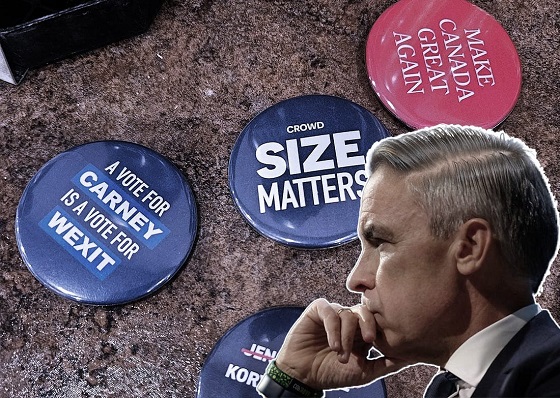
 2025 Federal Election1 day ago
2025 Federal Election1 day agoInside Buttongate: How the Liberal Swamp Tried to Smear the Conservative Movement — and Got Exposed
-

 Alberta2 days ago
Alberta2 days agoProvince to expand services provided by Alberta Sheriffs: New policing option for municipalities
-

 Alberta1 day ago
Alberta1 day agoMade in Alberta! Province makes it easier to support local products with Buy Local program
-

 2025 Federal Election1 day ago
2025 Federal Election1 day agoCSIS Warned Beijing Would Brand Conservatives as Trumpian. Now Carney’s Campaign Is Doing It.
-

 COVID-1921 hours ago
COVID-1921 hours agoCOVID virus, vaccines are driving explosion in cancer, billionaire scientist tells Tucker Carlson





